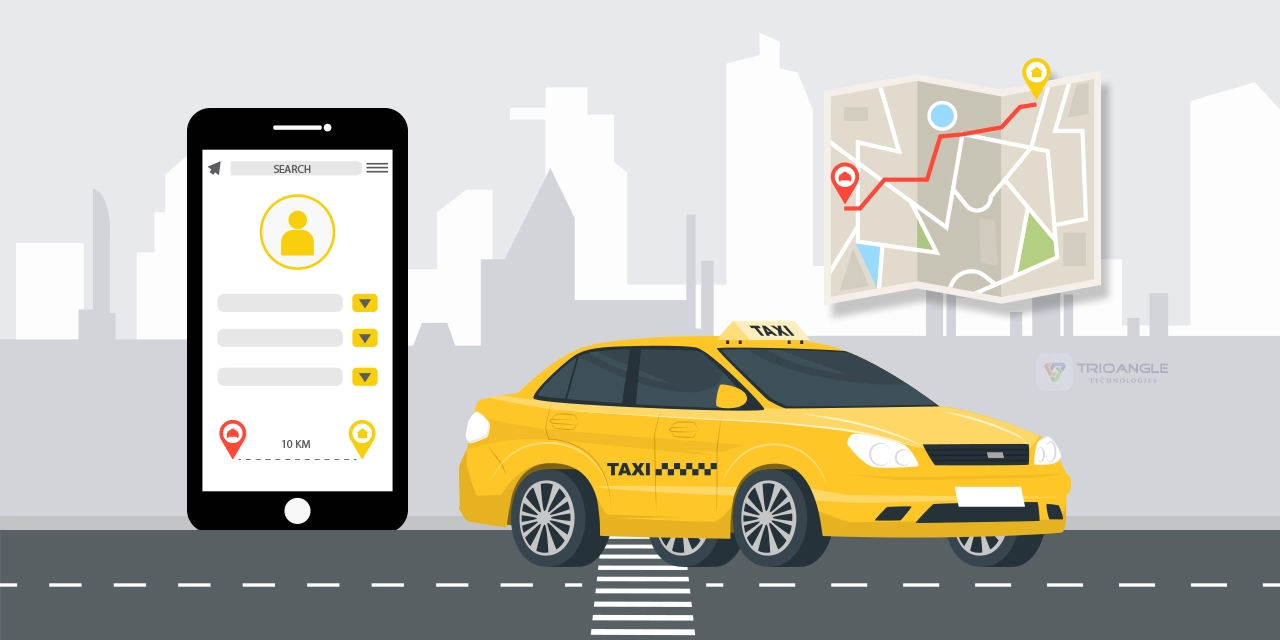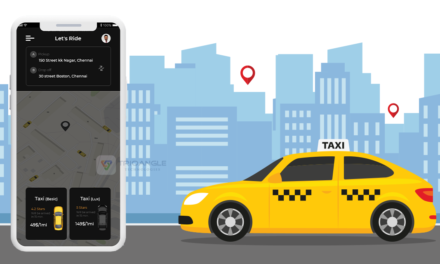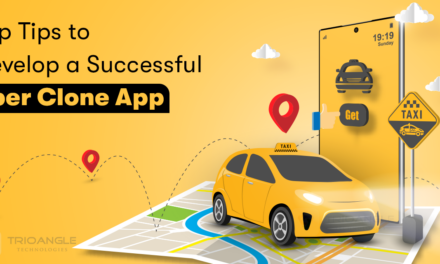Starting a taxi business in 2024 offers thrilling opportunities, especially with the availability of technology to build an Uber-like platform tailored to your needs. However, to turn your vision into reality, it’s crucial to understand the financial landscape. This comprehensive guide will break down the essential costs of starting a taxi business and explore how developing an Uber clone app can simplify your operations and give you a competitive edge.
Key Takeaways
- Investment in Fleet & Operations: Starting a taxi business requires investment in vehicles and their maintenance.
- App Development Costs: Developing an Uber-like app is crucial for modernizing your taxi business.
- Effective Marketing & Driver Management: Allocate funds for initial and ongoing marketing to attract riders and drivers.
- Enhanced Customer Experience: An Uber clone app streamlines operations, offers real-time analytics, enhances safety.
- Contingency Planning & Compliance: Ensure you have emergency funds for unexpected costs and stay compliant with local regulations.
Without further ado, let’s dive into the details! 🚖🚀
Breaking Down the Costs of Starting a Taxi Business
Launching a taxi business involves several key expenses. Let’s explore each in detail:
1. Fleet of Vehicles: Your Prime Assets
The vehicles you use are the heart of your taxi service. Your choices will directly influence your startup costs.
Purchasing Vehicles:
- New Vehicles: Buying new sedans typically ranges from $20,000 to $30,000 each. Opting for SUVs or electric cars can increase this cost to $40,000 or more per vehicle.
- Used Vehicles: Used cars offer a more economical option, costing between $10,000 and $20,000. Ensure they are in good condition to avoid high maintenance costs later.
Leasing Vehicles
Leasing spreads the initial cost over time but requires regular payments. This can be a flexible solution, especially for those with limited upfront capital.
Maintenance Cost
Budget for annual maintenance, estimated at $1,000 to $2,000 per vehicle. Regular servicing, tire changes, and other upkeep are vital to keep your fleet in top condition.
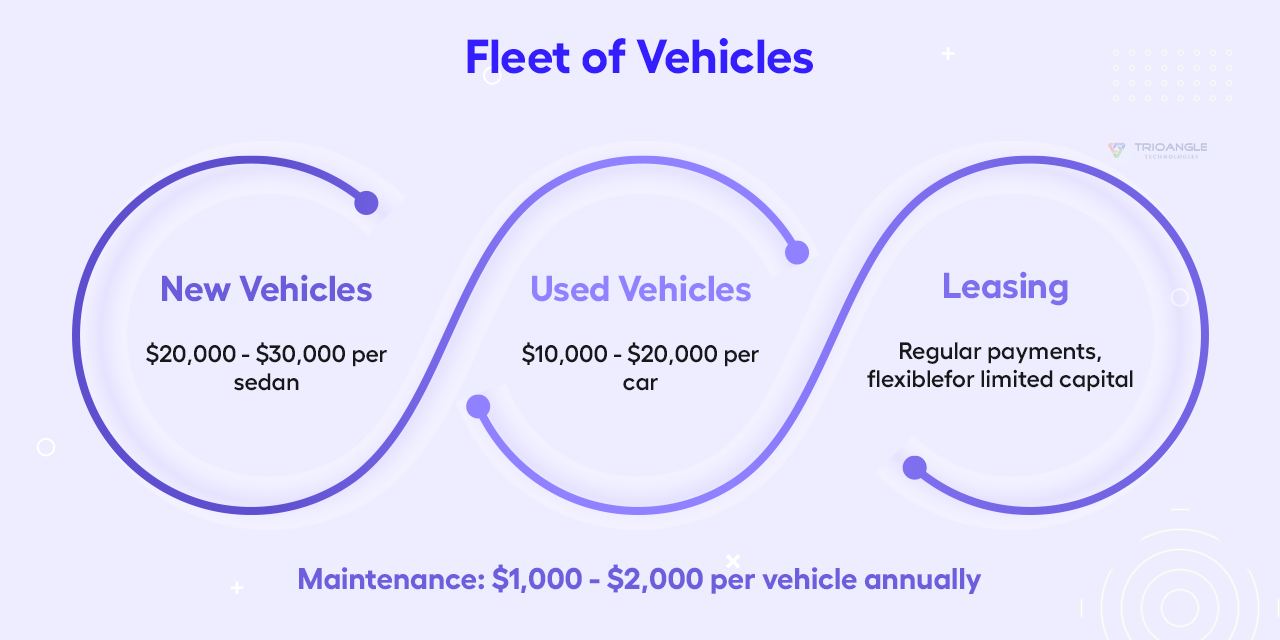
2. Insurance: Safeguarding Your Fleet
Commercial auto insurance is mandatory and protects your business from liabilities.
Cost
Typically, you should expect to spend between $2,000 and $4,000 per vehicle annually.
Smart Hacks to Reduce Cost
- Shop Around: Compare different insurers to get the best rates.
- Discounts: Look for discounts related to safety features, good driving records, or bundling multiple policies.
- Higher Deductibles: Opt for a higher deductible to lower your monthly premium.
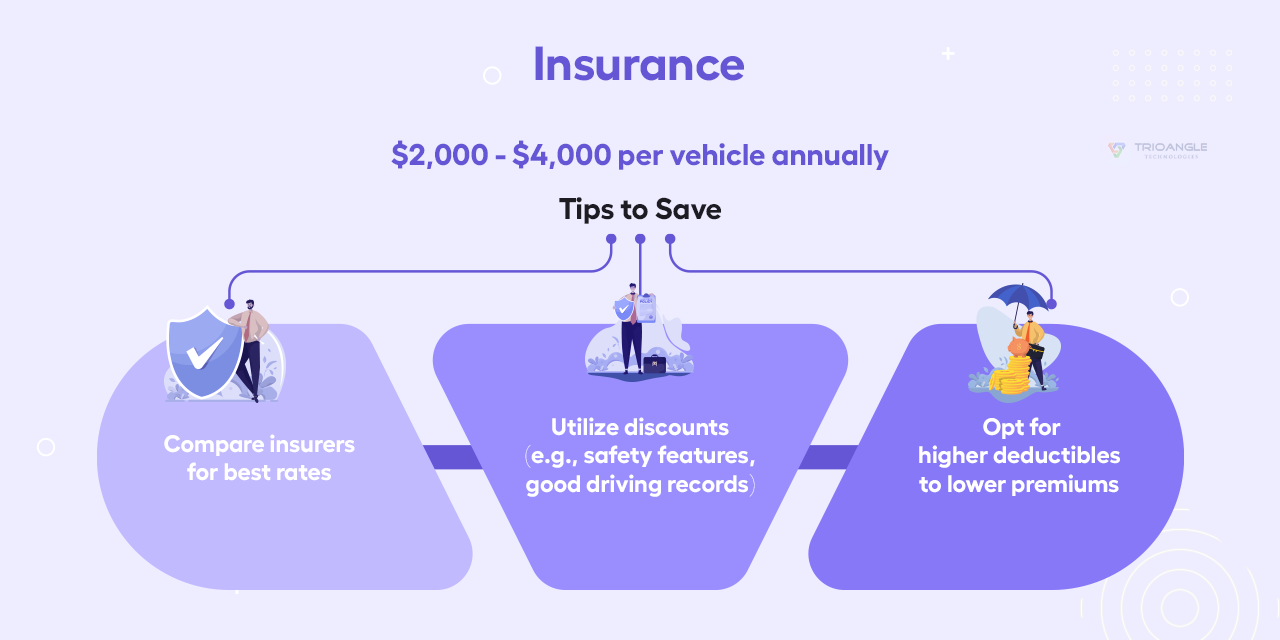
3. Licensing and Approvals: Mastering Regulations
Compliance with local laws is essential to operate legally.
Cost
These can range from a few hundred dollars to several thousand, depending on your location and the scope of your business.
Research
Contact local regulatory bodies or consult online resources to understand the necessary permits and licenses for your area.
4. Technology: Building Your Uber Clone
In today’s digital age, an app similar to Uber is crucial for your business.
App Development
- Basic Version: A simple Uber clone app with essential features might cost between $10,000 and $30,000.
- Advanced Features: More complex apps with additional features like real-time tracking, payment gateways, and advanced analytics can range from $30,000 to $100,000 or more.
Hosting and Maintenance
Plan for monthly expenses between $500 and $2,000 for server hosting and app maintenance.
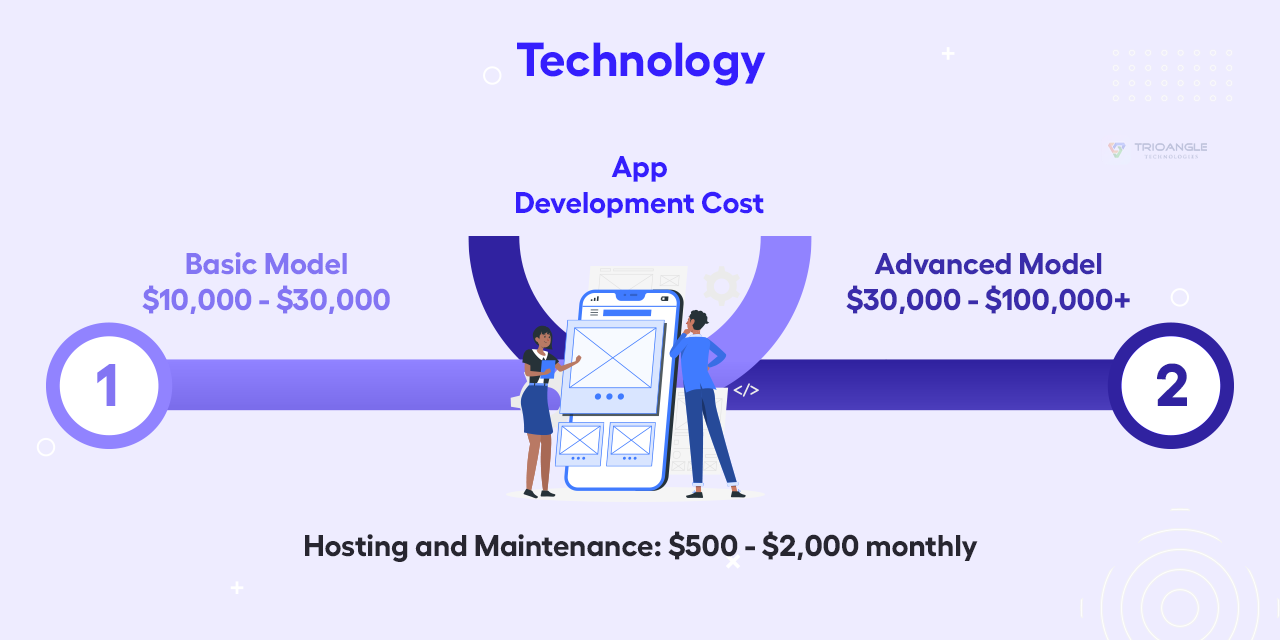
5. Marketing and Promotion: Attracting Riders and Drivers
Effective marketing is vital to grow your customer base and attract drivers.
Initial Campaigns
Allocate a few thousand dollars for initial advertising on social media, search engines, and local outlets.
Ongoing Marketing
Continuous investment is needed to maintain visibility and attract new users. This could include digital ads, promotional offers, and partnerships.
6. Driver Recruitment and Training: Building Your Team
Recruiting and training drivers is a critical step to ensure quality service.
Recruitment Cost
Plan for $200 to $500 per driver for background checks and onboarding.
Training:
Invest in thorough training programs to ensure your drivers provide excellent service and understand your operational standards.
7. Driver Compensation: Structuring Pay
How you compensate your drivers can significantly impact your operational costs and driver satisfaction.
Pay Models
- Commission-Based: Drivers earn a percentage of each fare.
- Hourly Rates: A set hourly wage, regardless of the number of rides.
- Per-Ride Payments: A fixed amount per ride completed.
Incentives
Consider offering bonuses for peak times or high-performance metrics to motivate and retain drivers.
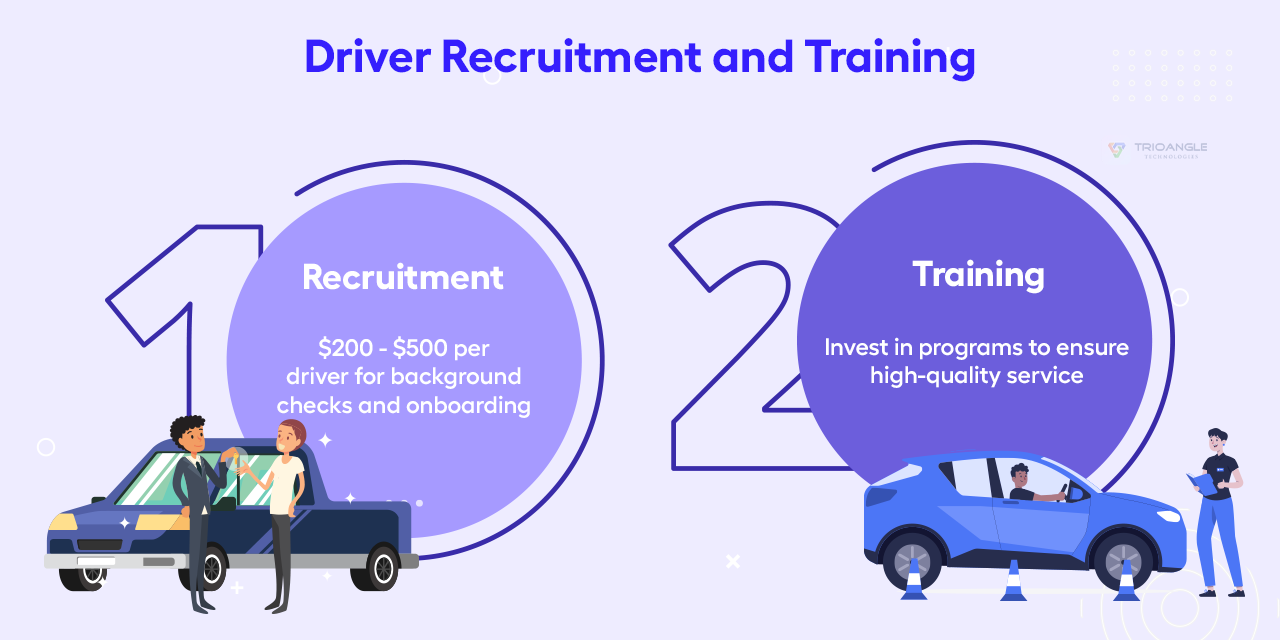
8. Operational Costs: Keeping Things Running
Running a business involves various operational expenses.
Office Space
Costs will vary depending on the location and size of your office. Larger cities and prime locations generally command higher rental or leasing costs than suburban areas.
Additionally, the size of your office impacts utility bills, maintenance expenses, and potentially even taxes.
Management Software
Investing in robust software solutions is essential for optimizing the efficiency of your taxi business operations.
A comprehensive booking system ensures seamless scheduling and dispatching of rides, improving customer satisfaction and driver allocation.
Staff Salaries
Allocating funds for salaries is critical to maintaining a competent and motivated team to support your taxi business.
Budgeting for salaries not only ensures you attract and retain talented individuals but also establishes a reliable foundation for sustained business growth.
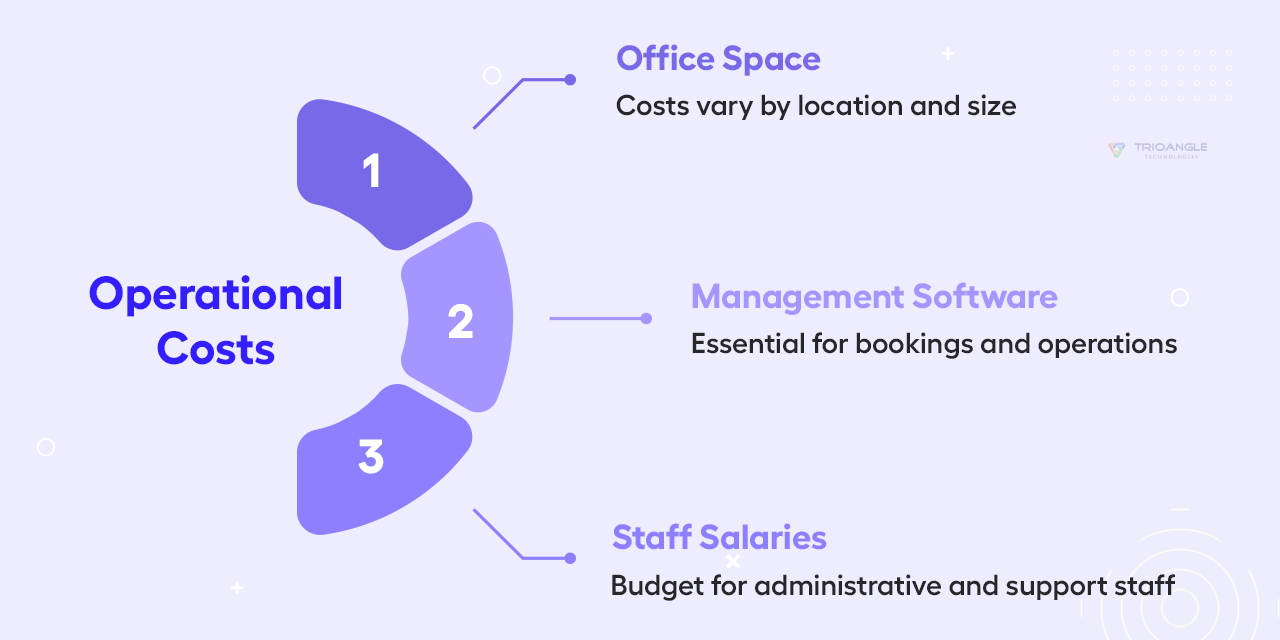
9. Protection and Amenities: Ensuring Safety Every Trip
Safety is a top priority in the taxi business for drivers and passengers.
Safety Features
Equip vehicles with essential safety tools like cameras, alarms, and GPS tracking. This can cost $500 to $1,000 per vehicle.
Routine Inspections
Regular safety checks are a cornerstone of maintaining exceptional safety standards in your taxi business.
By conducting regular safety checks, you can ensure compliance with regulatory requirements and demonstrate your commitment to passenger and driver safety.
10. Taxes and Licensing Fees: Ongoing Compliance
Preparing for ongoing taxes, licenses, and fees associated with operating a taxi business is crucial, as these obligations vary significantly depending on your business’s location and scale of operations.
Taxes typically include income taxes, payroll taxes if you have employees, and potentially property taxes if you own your office space or vehicles.
Licensing requirements vary by jurisdiction but often include permits for each vehicle, driver licenses or certifications, and business operating permits.
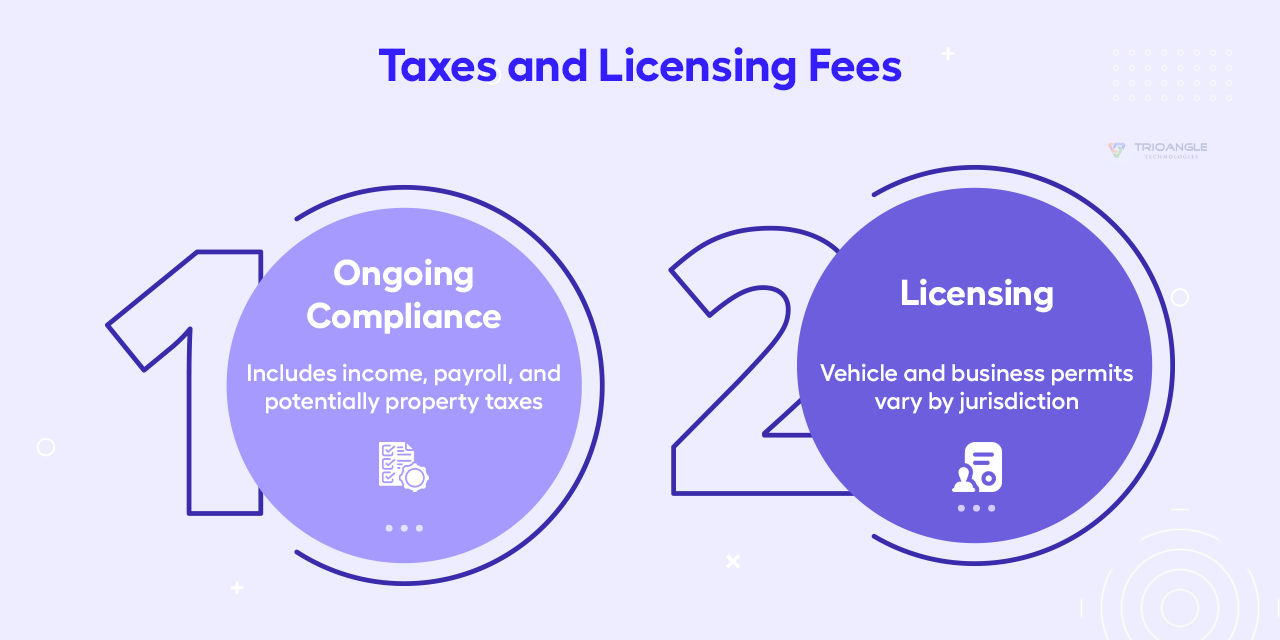
11. Customer Support: Enhancing User Experience
Providing exceptional customer support is key to retaining customers.
- Support Staff: Hire a team to handle inquiries, complaints, and issues efficiently.
- 24/7 Availability: Consider round-the-clock support to address customer needs at all times.
12. Emergency and Contingency Funds: Preparing for the Unexpected
Maintain a reserve fund to cover unexpected expenses or business downturns, ensuring stability and flexibility.
The Benefits of an Uber Clone App
Uber clone app provides significant advantages that can enhance your business operations and customer experience:
1. Streamlined Operations with Uber Clone App
Optimized Efficiency
By utilizing an Uber clone app, you can efficiently manage ride requests, dispatch drivers, and track vehicles in real time. This capability reduces wait times for passengers and enhances operational efficiency, ensuring prompt and reliable service.
Automated Processes
Automation within the Uber clone app automates routine tasks such as booking management and payment processing. This automation frees up valuable time for your team to focus on strategic growth initiatives and improving customer satisfaction.
2. Efficient Driver and Vehicle Management
Simplified Management
The Uber clone app simplifies driver onboarding, enabling quick and efficient integration of new drivers into your fleet. You can also monitor driver performance and optimize routes through a user-friendly interface, enhancing overall operational efficiency.
Fleet Oversight with Uber Clone
Efficiently manage your fleet operations using the Uber clone’s comprehensive tools. Maintain high service standards by monitoring vehicle maintenance schedules, fuel efficiency, and driver compliance, ensuring a seamless experience for both drivers and passengers.
3. Uber Clone’s Enhanced Safety Standards
Built-In Safety Features
The Uber clone app comes equipped with essential safety features such as emergency buttons, GPS tracking, and driver background checks. These features create a secure environment for passengers and drivers alike, building trust and reliability in your service.
Passenger Confidence
Robust safety measures offered by the Uber clone app instill confidence in passengers, encouraging more bookings and repeat business. Safety is prioritized, ensuring peace of mind throughout the journey.
4. Uber Clone Promotes Customer Engagement
Direct Communication
In-app chat features enable direct communication between passengers and drivers, facilitating personalized service and quick resolution of any issues that may arise during the trip.
Feedback Channels
Utilize the Uber clone app to gather valuable feedback from customers. This data helps in continuously improving service quality, addressing concerns promptly, and adapting to changing customer preferences.
5. Uber Clone Offers Real-Time Analytics
Data-Driven Decisions
Access real-time analytics through the Uber clone app to gain insights into ride trends, customer behavior, and driver performance. This information empowers informed decision-making, optimizing operational efficiency and enhancing service delivery.
Operational Insights
Leverage analytics to identify operational inefficiencies and areas for improvement within your taxi business. Continuous refinement based on data ensures that your services remain competitive and responsive to market demands.
Suggested Trending Topics
How to Develop a Taxi App Like Uber?
Key Features of an Uber Clone App: Entrepreneurs Must Know!
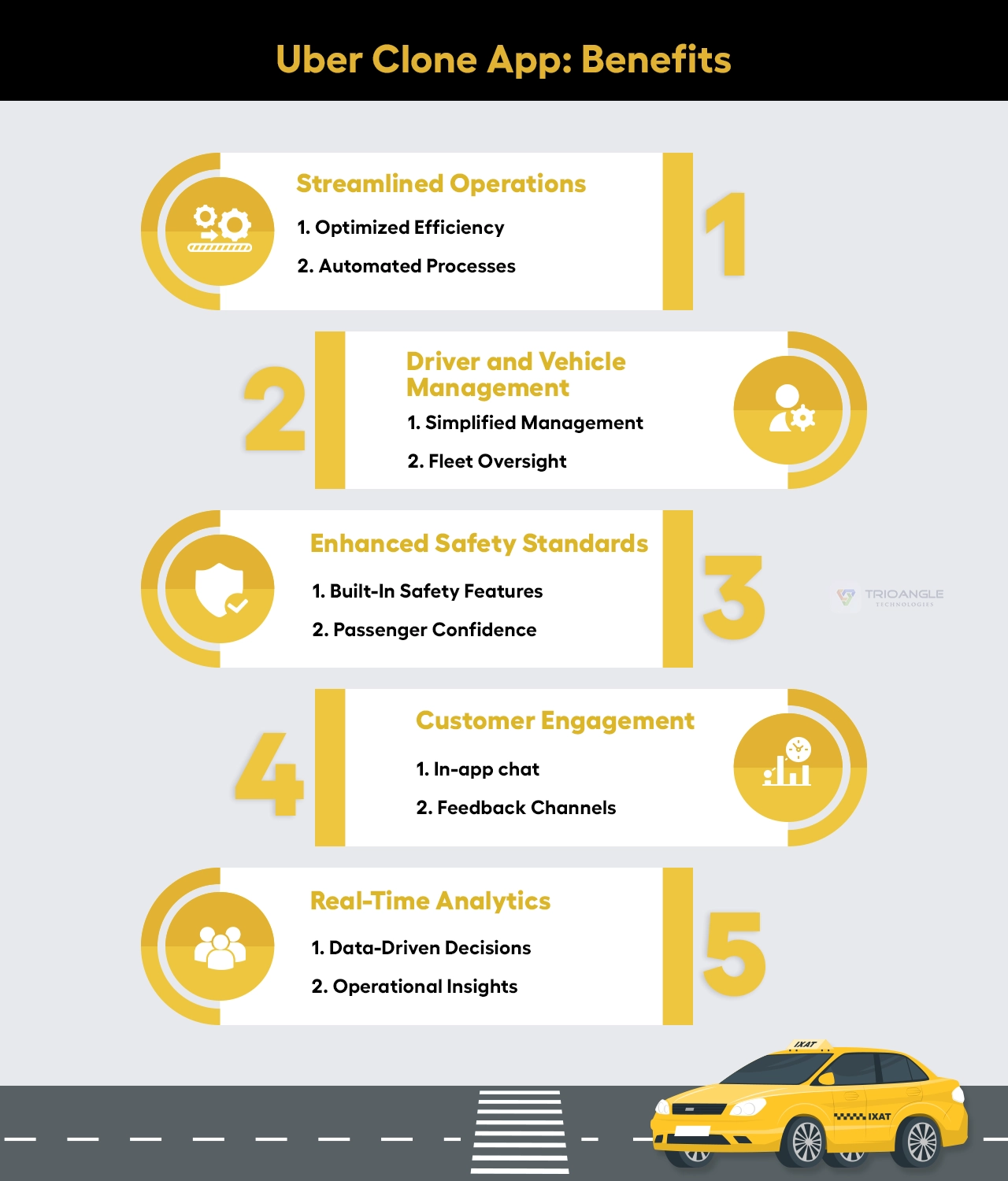
The Cost of Developing an Uber Clone App
The cost of developing an Uber clone app varies based on several factors:
- Feature Set: The development cost of an Uber clone app increases with more extensive features and enhanced functionality, reflecting the app’s versatility and competitive edge in the market.
- App Complexity: Apps with more users and data management needs are more complex and costly to develop and maintain.
- Development Team: Experienced developers and well-established firms might charge more, but they often provide higher quality and faster turnaround times.
Based on these variables, expect to invest between $10,000 and $100,000 to develop your futuristic Uber clone app.
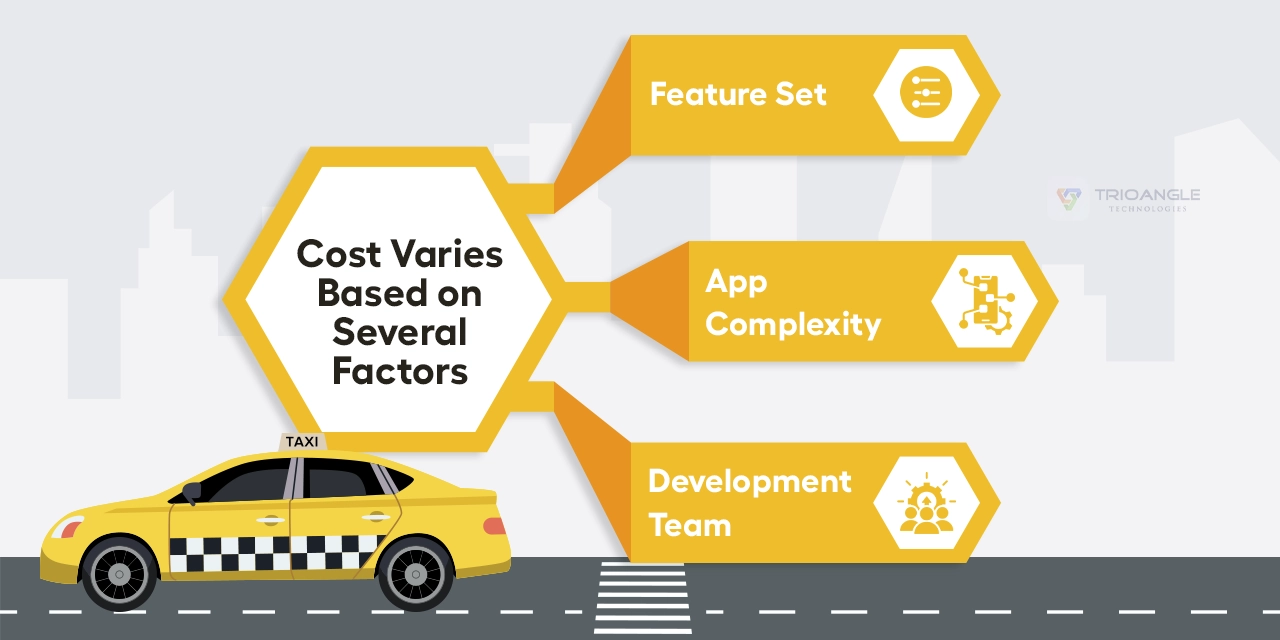
Ready to Dominate the Taxi Industry With Uber Clone?
Starting a taxi business in 2024 involves various expenses, from acquiring and maintaining vehicles to developing a sophisticated Uber clone app. By understanding and planning for these costs, you can set a solid foundation for success.
To summarize:

An Uber clone app not only streamlines your operations but also enhances safety, customer engagement, and data management, giving you a significant edge in the competitive ride-sharing market.
Ready to hit the road?
Need more insights about the taxi business or Uber clone app?

